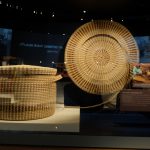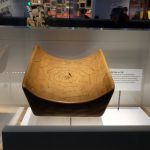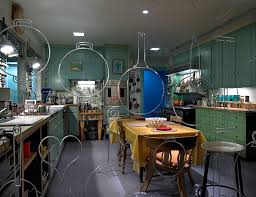By Professor Tiffany Banks On Tuesday, September 30th , students from my COMM 108: Foundations…

For the third year in a row, the MC Faculty Fellows had the privilege of meeting with curators at the National Museum of African American History and Culture (NMAAHC). Our afternoon began with a presentation by Kinshasha Holman Conwill, Deputy Director of the Museum. She provided a brief history of the years of work that culminated in the the Museum’s 2016 opening. While 2003-2016 are recognized as the lead-up years, the idea for a museum that recognized African American history and culture had been percolating for over a century, beginning in the post-Civil War era with the recognition that African American veterans were not being honored as were their white colleagues. In 2003, President George Bush signed the legislation that would allow the dream of a museum to become a reality. As curators, designers, directors and other staff worked toward the Museum’s opening, they were guided by the vision of a space that would create an opportunity to explore and revel in African American History and Culture. The museum would use this history and culture as a lens to view what it means to be an American, and to tell the African American Story in an international context. A place for all, it would inform, educate and allow for collaboration. She described a number of ways the museum works to carry out these goals.
Ariana Curtis, Curator of Latinx Studies, NMAAHC spoke next, sharing her presentation, “Black and Brown: Latinx History is American History”. In her role as Curator of Latinx Studies, she is responsible for building a collection and then interpreting objects that focus on Latinx, Afro-Latinx, African American & Latinx, African Diaspora, and African American presence in Latin America. As she defined these various terms it was easy to see the need to address the multiracial, multinational, multi-ethnic qualities of Latinx Studies. She shared with the group that the very first object donated to the museum was a carved Ecuadorian boat seat, replete with a carving of a spider representing Anansi, the character drawn from West African and Caribbean folklore. She reminded us that the Underground Railroad ran south into Mexico, not just north, and that many African Americans immigrated south of the border following the Civil War, again speaking to the need to have an international focus when telling the Afro-Latinx story.
This was followed by , “I Am Who I Say I Am: Dress and Fashion at the National Museum of African American History and Culture”, presented by Elaine Nichols, Supervisory Curator of Culture, NMAAHC. She began by identifying the difference between the terms “dress” and “fashion” with dress being an extension of the self, and more than what we wear. Dress involves a deliberate modification of appearance that comprises all of the ways in which we present ourselves through not just clothing but also things like cosmetics, piercings, wigs, application of scents, and even weight gain and loss. Dress can be used to protect the body, to provide unity and identity within cultural groups and serve as a form of visual communication that lets us tell others who we are. Fashion, on the other hand, is temporary and usually created by someone for you. It expresses your personality and style and can help you fit in or stand out. NMAAHC’s collections include three by important African American women, and Ms. Nichols’s talk highlighted the three: Eunice Johnson, creator and director of the Ebony Fashion Fair, Ophelia Devore, model, agent, charm-school director and newspaper publisher who almost single-handedly opened the modeling profession to African-Americans, and Lois Alexander Lane, fashion designer and businesswoman who founded the Black Fashion Museum and helped hundreds become graduates of the Harlem Institute of Fashion.
The Fellows were then given time to explore the Culture Galleries where many of the objects we had just heard described are located. This was followed by a question and answer session, where Rex Ellis, Associate Director for Curatorial Affairs at NMAAHC, was able to join us. The conversation that emerged as questions were asked and answered made it clear that the afternoon had been an enriching experience that left all wanting more.












This Post Has 0 Comments